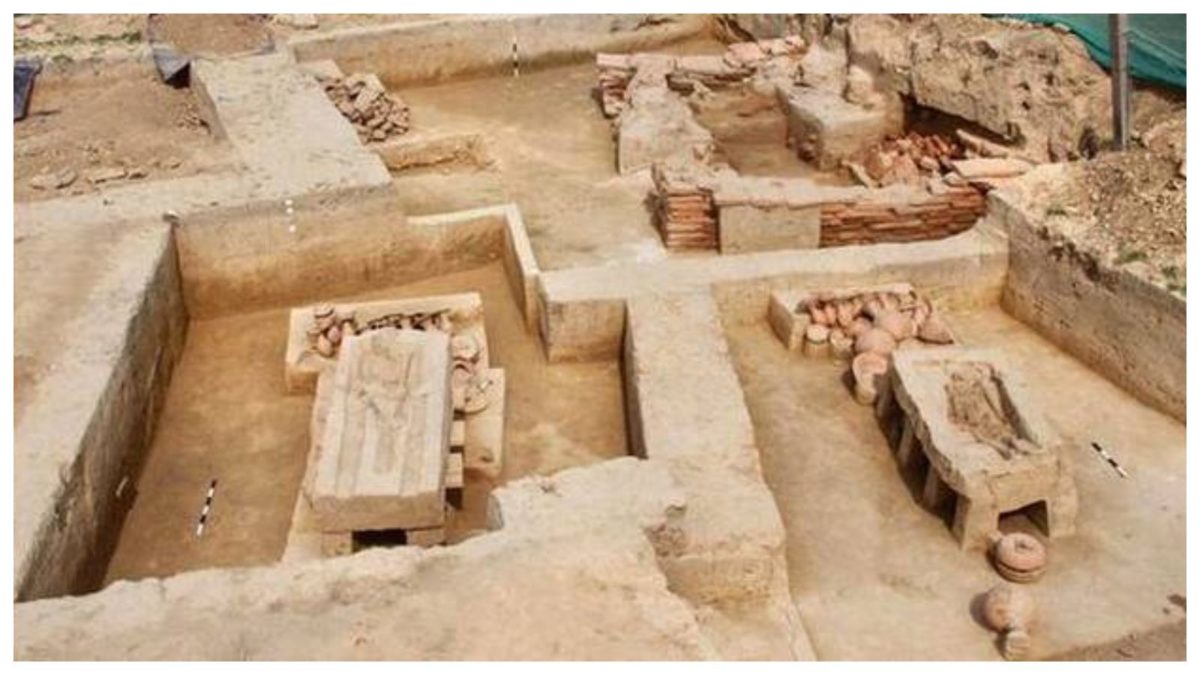Last year, the Archaeological Survey of India (ASI) had discovered many excavation sites in Uttar Pradesh, and one such site was in the small village of Sanauli. This 4,000-year-old burial site was one of the most important projects for the ASI, as they had discovered many artefacts like chariots, coffins and daggers to name a few. But, the discovery of a chariot in a 4,000-year-old site is the most interesting thing, as it makes us wonder about the evolution of our mode of transport.
In recent Excavations at Sanauli, Baghpat, UP under Dr. SK Manjul, @ASIGoI finds Coffin Burials, furnaces & fascinating artifacts’. The present excavation is carried out to understand the extension of burial site and also habitation area in relation with earlier findings of 2018. pic.twitter.com/sq0idEjclc
— Archaeological Survey of India (@ASIGoI) May 2, 2019
The excavation of this site had begun in 2018, but due to some reasons, they had stopped the excavation halfway. However, in January, Dr S.K. Manjul resumed the excavation. Recently they found three chariots, some coffins, shields, swords, helmets and Chariots, which clearly pointed towards the existence of warriors and their mode of transport. These findings prove that vehicles have come a long way, from being dragged by a horse to producing horsepower. The evolution of a horse or cattle driven chariot to an electric or petrol powered car proves the long journey of mankind and its important contribution towards the various modes of transport.
The Archaeologists were surprised when they found out that these artefacts were from the ‘Bronze Age’ (2000-1800 BC). The excavations had been going on for nearly three months and the chariots found were decorated with copper motifs and were equipped with swords and daggers, which are symbolic to the ancient civilizations of Mesopotamia and Greece. All the artefacts found earlier at the ancient site were shifted from Baghpat to ASI’s museum in Delhi in June last year.
Also Read: Game of Thrones: Here’s What The Royals Would Drive If They Existed In This Age
This is what Dr SK Manjul had to say about the recent discoveries at this Archaeological site, “As an excavator, I think this is different from Harappan culture. It is contemporary to the last phase of the mature Harappan culture. These findings are important to understand the culture pattern of the Upper Ganga-Yamuna Doab. We found copper swords, helmets, shields and chariots. These may have been offered to the departed souls. We also found sacred chambers below the ground. After the procession, they put the body in the chamber for some treatment or rituals. Sanauli is located on the left bank of the River Yamuna, 68 km north-east of Delhi which brought to light the largest necropolis of the late Harappan period datable to the early part of second millennium BCE. Overall the ceramic assemblage has late Harappan characters.”

